Hola amigos de Hive. Como primera publicación en la que muestro una de mis recetas cotidianas empecemos con algo sencillo. Se trata de un plato que suelo comer al menos una vez por semana por lo sencillo de hacer y lo nutritivo. Como ya dije en mi publicación inicial, muchas de mis recetas son simples y prácticas, así que empecemos. El plato es: Pasta con queso rallado acompañada con guiso de huevos revueltos con tomates y mortadela y tajadas de plátano.
Ingredientes:
- Dos huevos.
- Mortadela (Una pieza, media pieza o lo que nos plazca).
- Queso llanero.
- Pasta.
- Sal.
- Aceite comestible.
- Plátano maduro.
- Salsa Inglesa.
- Salsa de ajo.
- Cúrcuma en polvo.
- Cebolla.
- Espinaca.
- Tomate.
- Salsa de tomate.
Preparación:

Lo primero es montar a hervir el agua para preparar la pasta. Me gusta tomar para ello una olla de cierto tamaño, la cual lleno hasta un poco más de la mitad de agua. Pero la medida exacta de la olla y agua para preparar la pasta, dependerá de tu gusto y del número de comensales para los que vayas a preparar esta receta.
Lo que debes recordar es que al poner el agua el calentar debes agregar una cucharada mediana de sal, y dos cucharadas grandes de aceite comestible. Mientras esperamos a que hierva el agua vamos a ir cortando los ingredientes para el guiso.

A mí me gusta cortar los ingredientes en una tabla de madera o de plástico, pero ustedes pueden usar para ello una cortadora de alimentos si lo desean. Procedemos a cortar en trozos pequeños la cebolla (yo utilicé media cebolla). Además, cortamos el tomate, la mortadela y la espinaca. El orden en que lo hagan no importa, porque (al igual que en la propiedad conmutativa en las matemáticas) aquí el orden de los factores no altera el producto.
Como ven en la foto anterior, ya piqué el tomate, la cebolla, la mordadela y la espinaca.
Ahora ponemos a calentar en la cocina un sartén en el que vamos a echar aceite comestible.

A mí me gusta usar el que ven en la imagen de arriba (que es aceite de maíz de marca Mazeite), pero ustedes pueden usar el tipo de aceite que gusten, siempre que sea comestible, lógicamente.

Como ya dije, ponemos aceite comestible en una sartén y luego la dejamos a fuego lento, para que no se vaya a quemar el aceite mientras terminamos de preparar todo lo demás.
Para este momento ya el agua de las pastas ya tiene un rato hirviendo, así que solo debemos agregar la pasta a la olla y estar pendiente. Yo tengo esta pasta de una marca muy popular en mi país, y es la que me gusta y la que voy a usar en la preparación de esta comida, pero ustedes pueden usar cualquier otra de su elección.
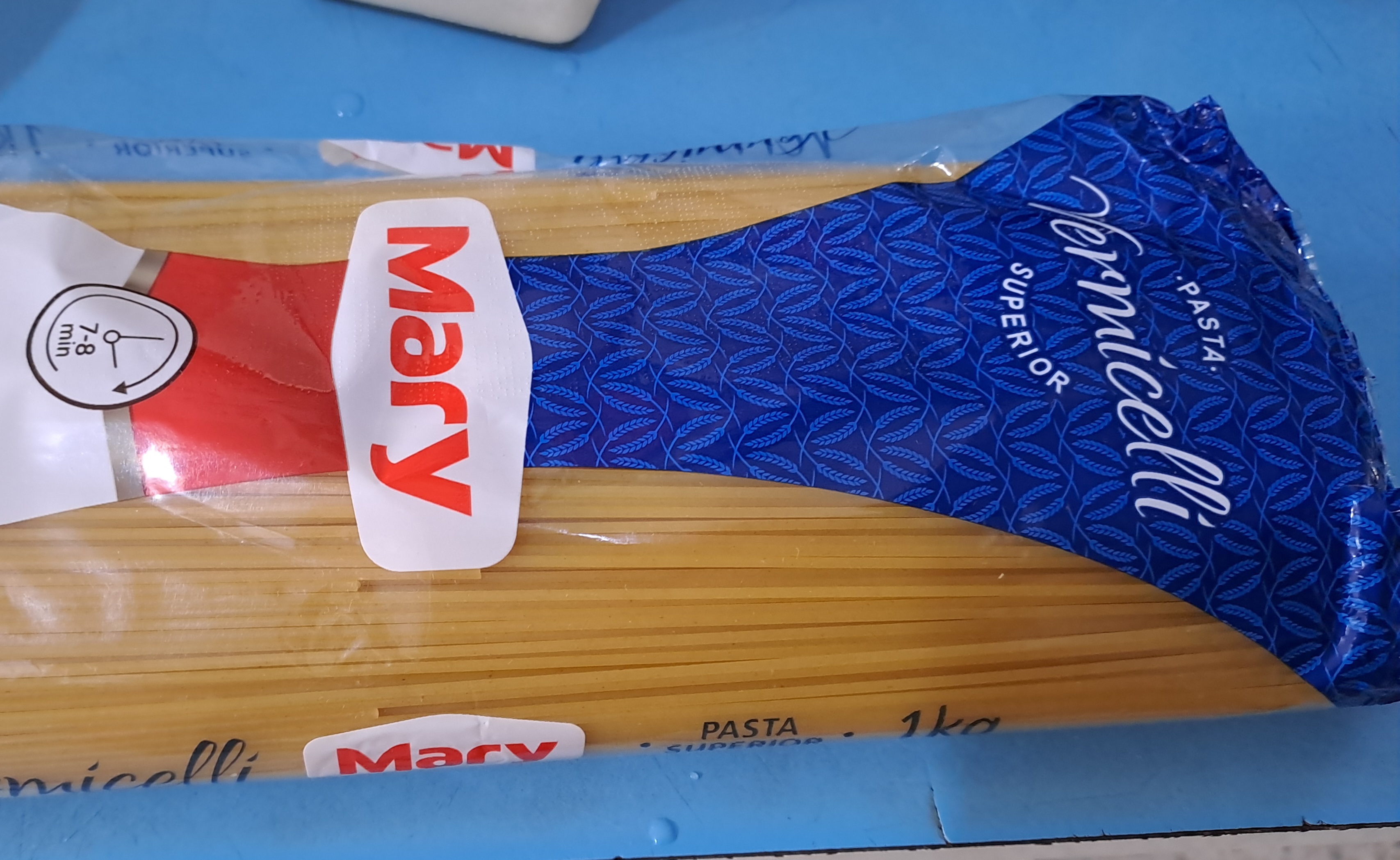
Como ven la que usé en esta ocasión es una pasta tipo Vermicelli de calidad superior de marca Mary. Hay que dejar que la pasta se vaya cociendo y a medida que se va ablandando, debemos irla meneando con un tenedor.
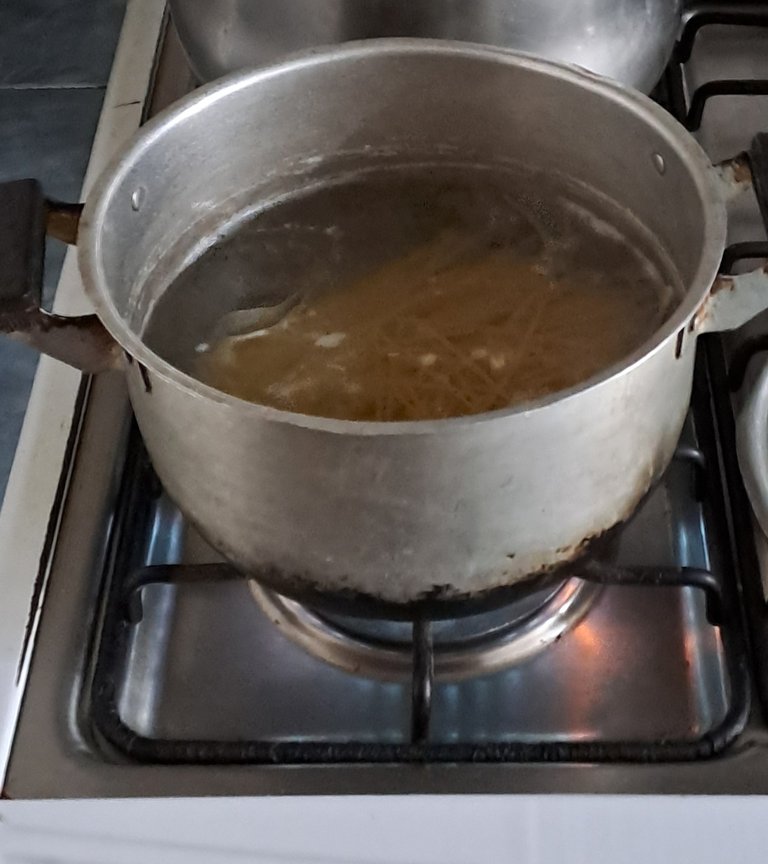
El punto exacto ideal para preparar la pasta (según me lo enseñó un amigo italiano hace muchos años) es "al dente". Que no es más que el punto en que la pasta conserva cierta firmeza al comerla. "Al dente" significa que la pasta debe quedar cocida, pero un poco dura al comerla.

Lo mismo aplica para las marcas de los productos que utilizamos como ingredientes, saborizantes y sazonadores de nuestras recetas. Por cierto que en esta preparación utilicé salsa inglesa y salsa de ajo de marca "La Giralda". Y cúrcuma de marca McCormick. Pero usen la marca que prefieran, siempre que sean salsa inglesa, salsa de ajo y cúrcuma.
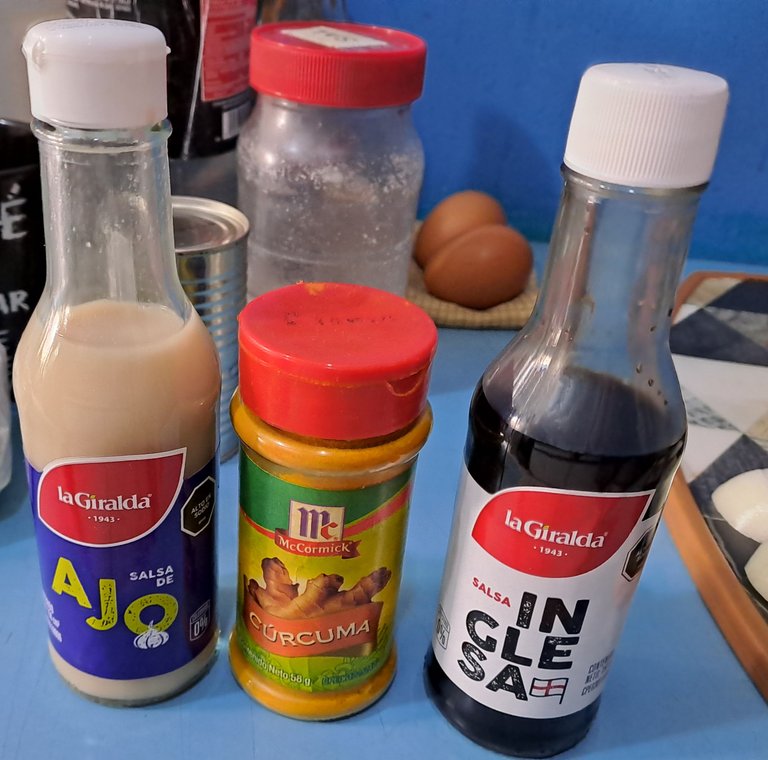
Como ya dije, le agregamos al huevo revuelto salsa inglesa.

También le agregamos salsa de ajo...
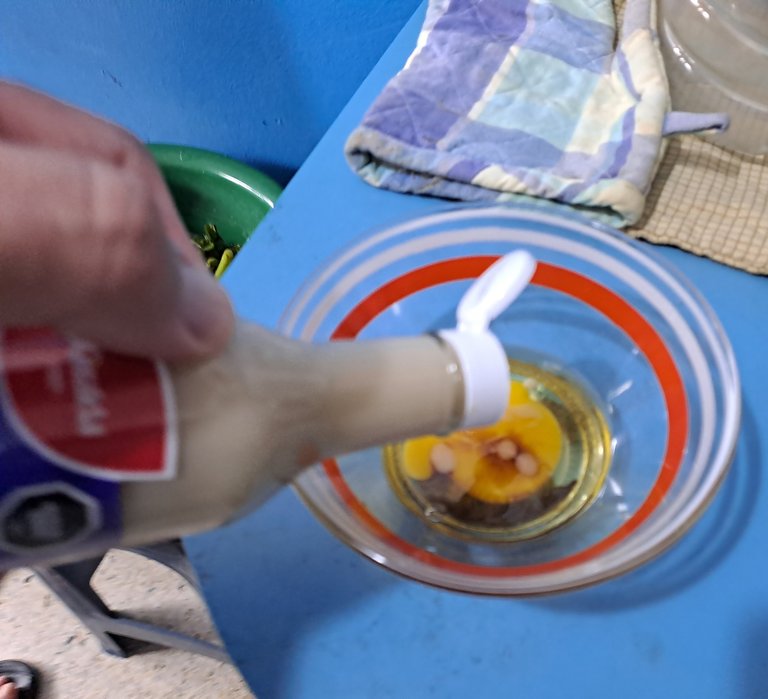
Y por supuesto, agregamos además la cúrcuma (ingrediente que pueden obviar si no les gusta el sabor del mismo).
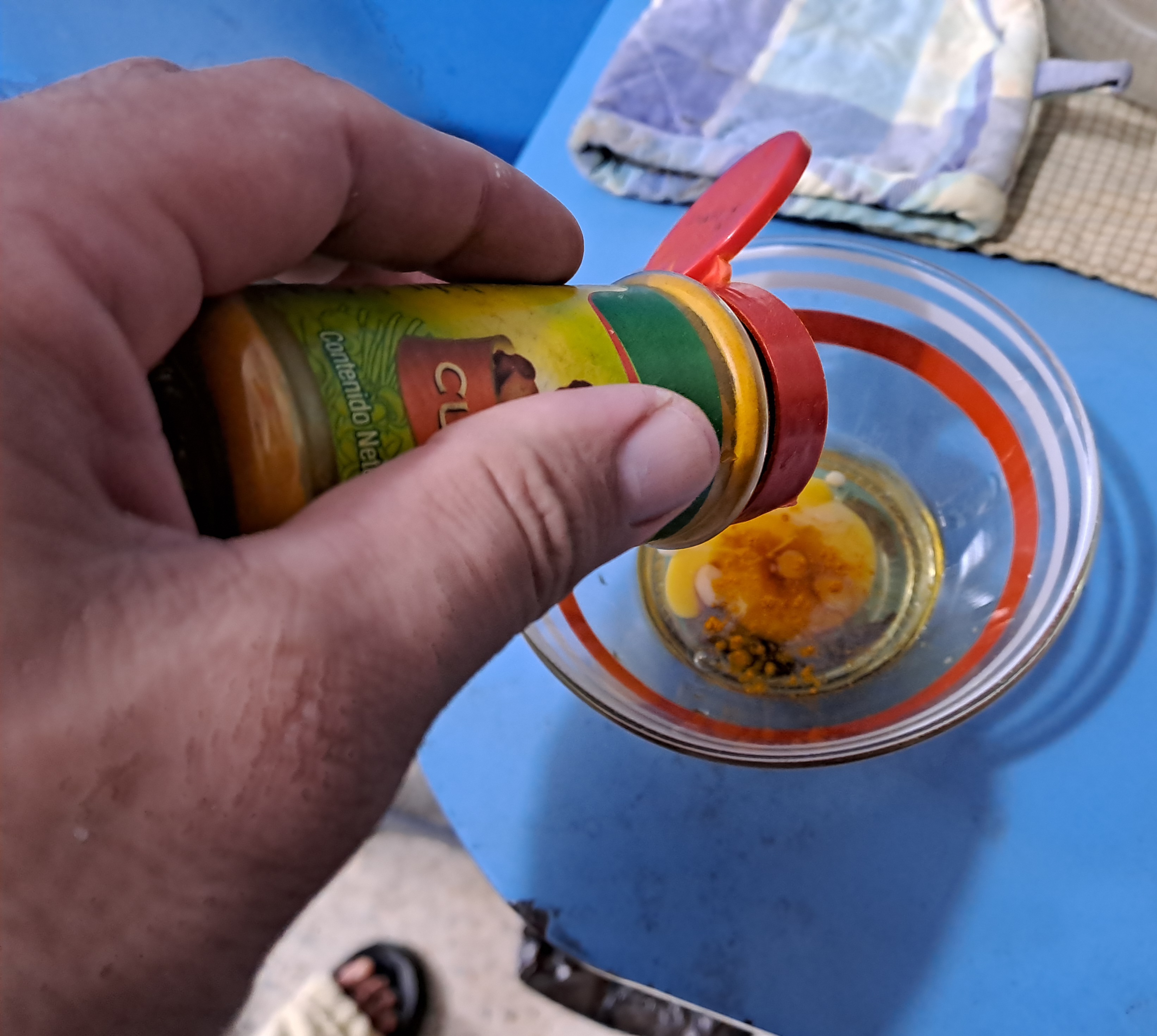
Revolvemos el huevo con todo lo que le hemos agregado y luego le agregamos la mortadela picada.
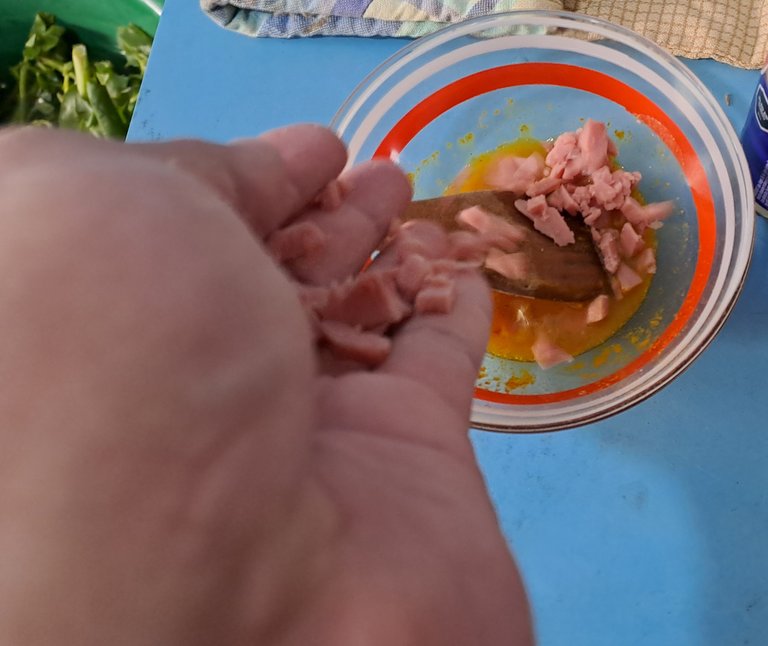
Revolvemos nuevamente, y si queremos le agregamos un poco más de salsa inglesa y salsa de ajo para darle más sabor.

Ponemos el tazón con el huevo revuelto con la mortadela a un lado y vamos a lo que sigue.
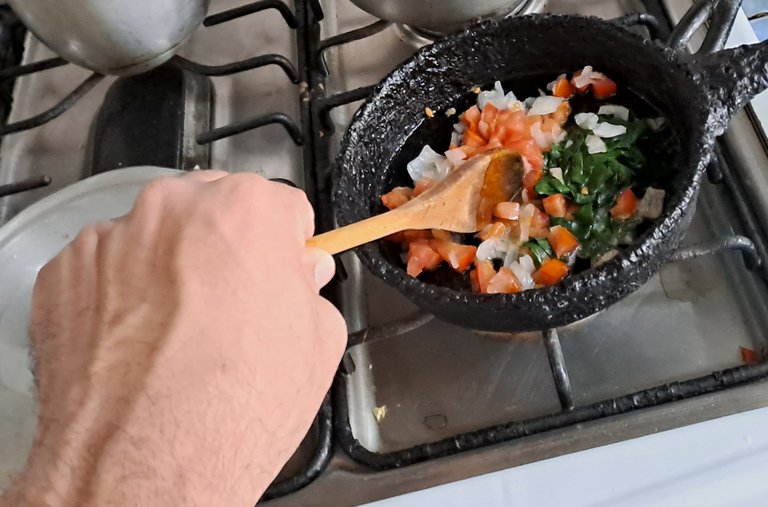
Luego de sofreír el tomate, la cebolla y la espinaca por alrededor de medio minuto a fuego medio, vertimos también el huevo revuelto con la mortadela en la sartén y comenzamos a revolver.
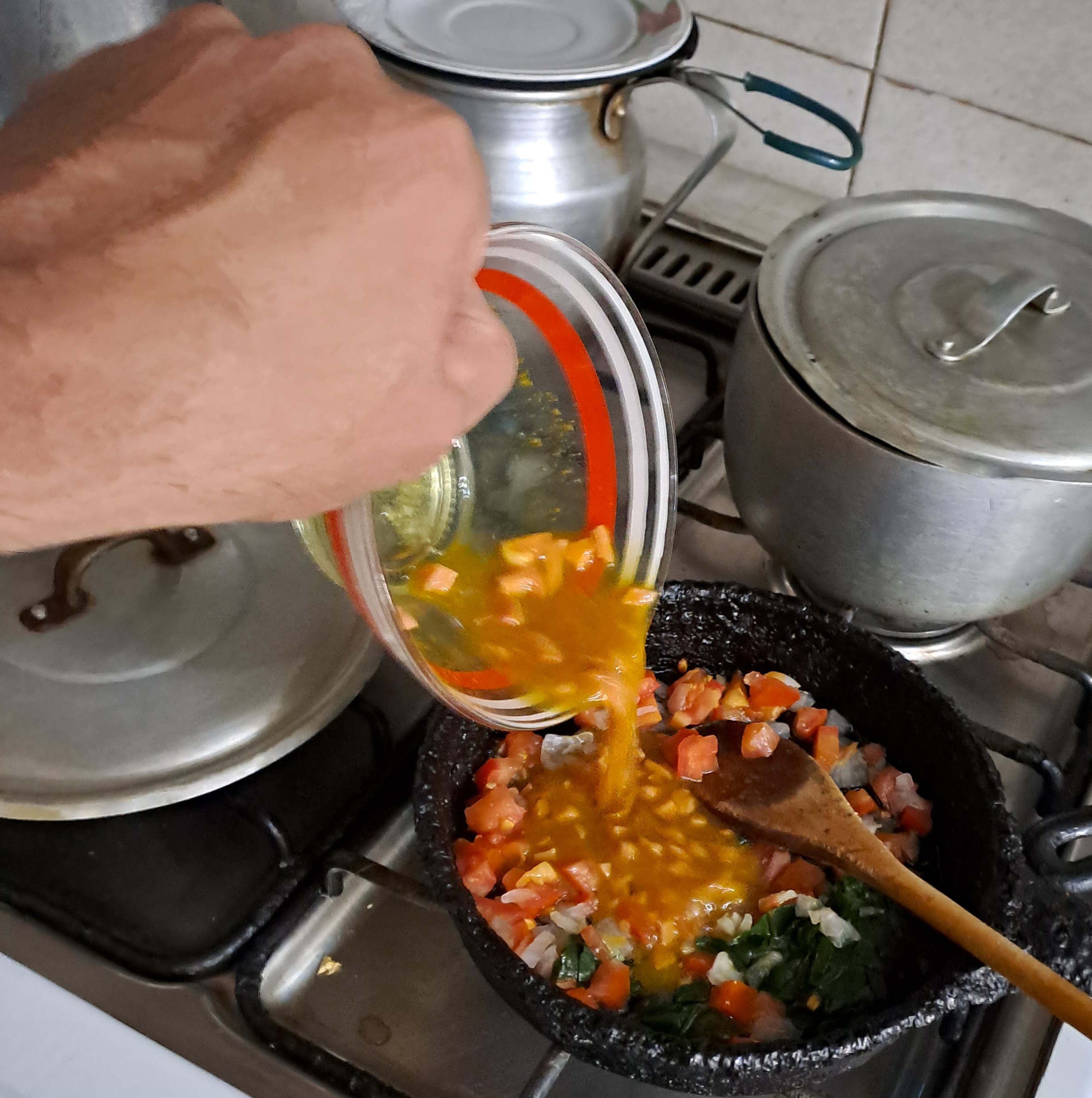
Revolvemos un poco por alrededor de 30 segundos.
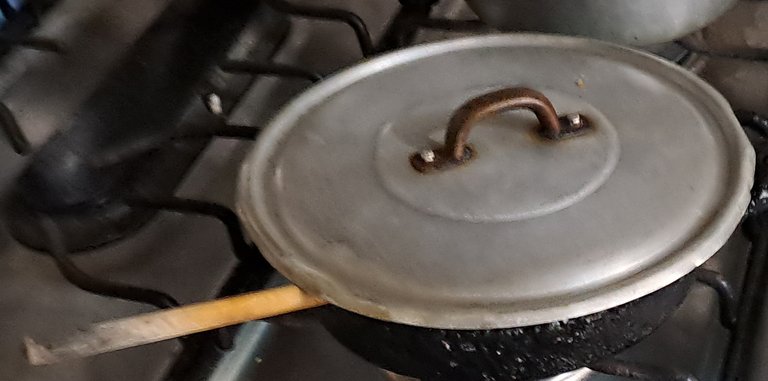
Y luego tapamos la sartén.
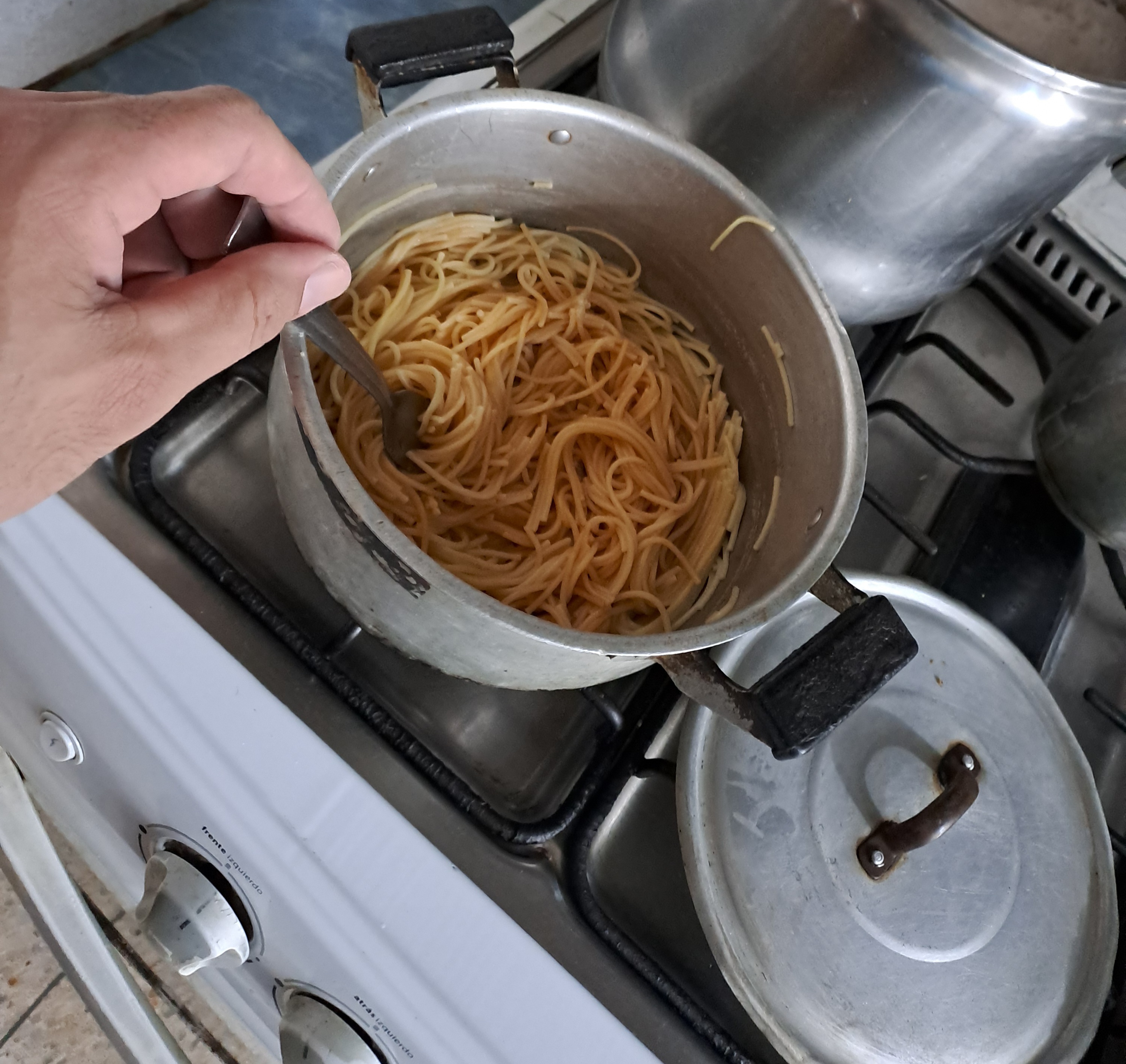
Ahora nos ocuparemos de la pasta que ya está lista (al dente) en la otra olla. Apagamos la hornilla, tomamos la olla y colamos la pasta en el fregadero (o en otra olla), y una vez que tengamos la pasta seca en la olla en que la preparamos, le agregamos salsa de tomate al gusto. Inmediatamente revolvemos la pasta y la tapamos. Mientras tanto, tomamos un poco de queso blanco (o queso llanero), y lo rallamos con un rallador y lo ponemos en un envase.
Volvemos ahora a prestar atención a la sartén donde estamos friendo el guiso, lo destapamos y veremos que se está compactando y que la mezcla parece estár creciendo, a lo que tendremos que revolver nuevamente, pero esta vez de manera vigorosa.
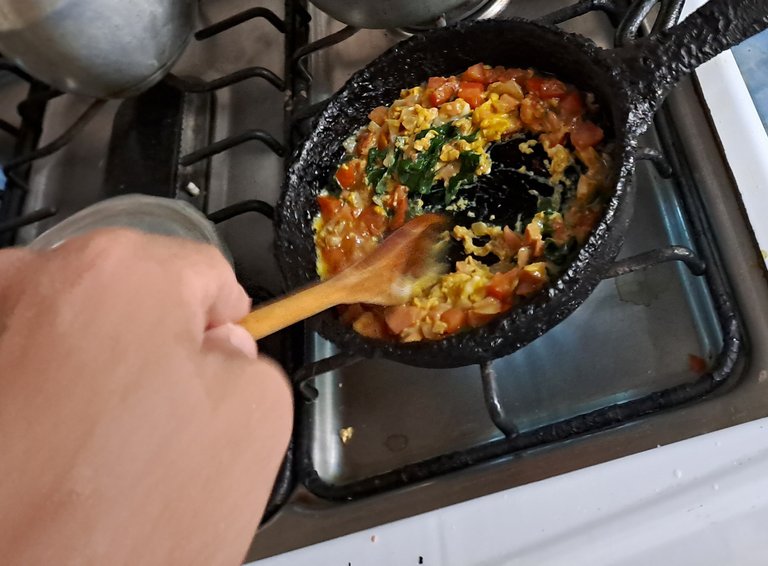
Al rato nos daremos cuenta (por la consistencia del preparado), que ya está listo y lo tapamos.
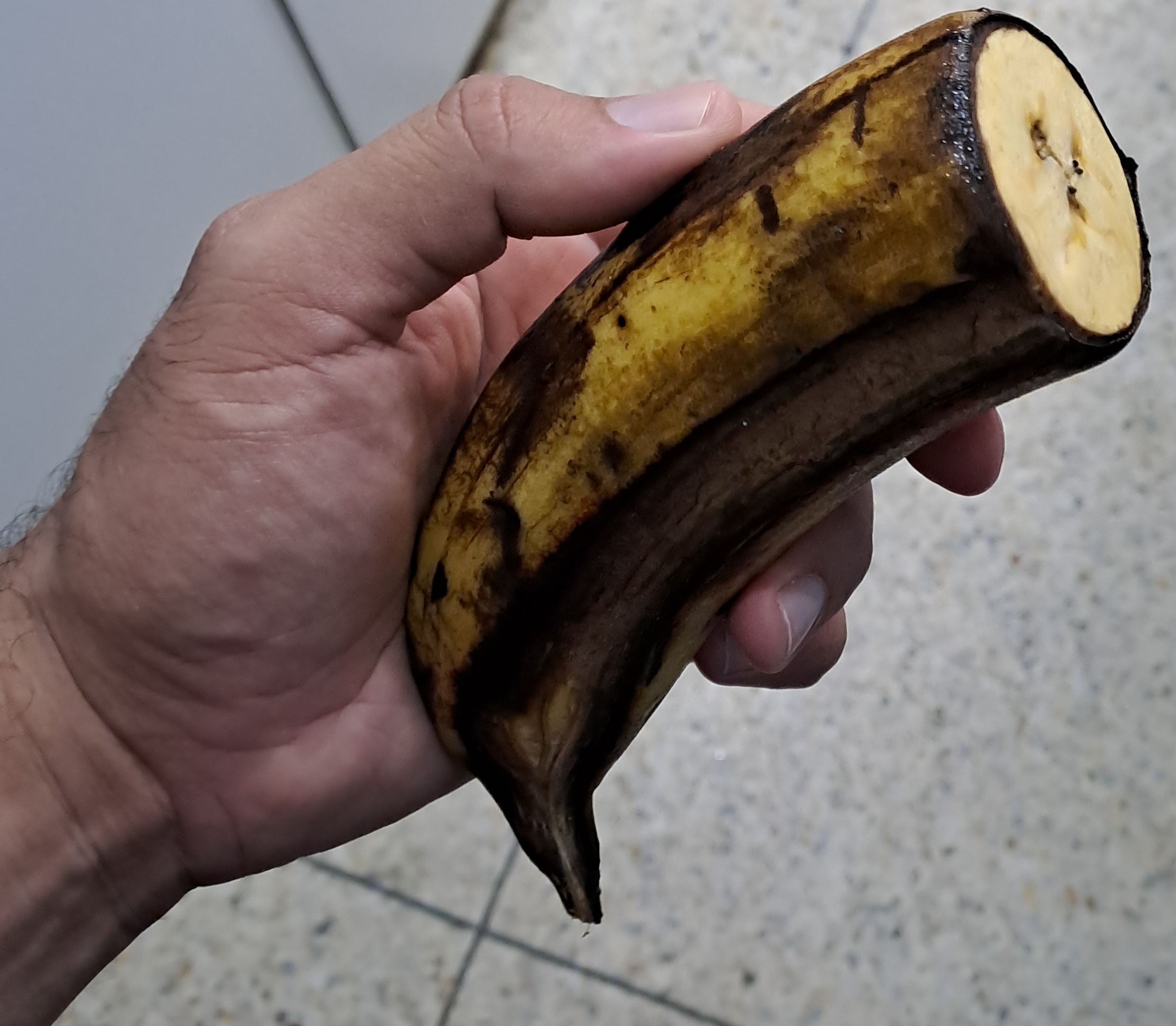
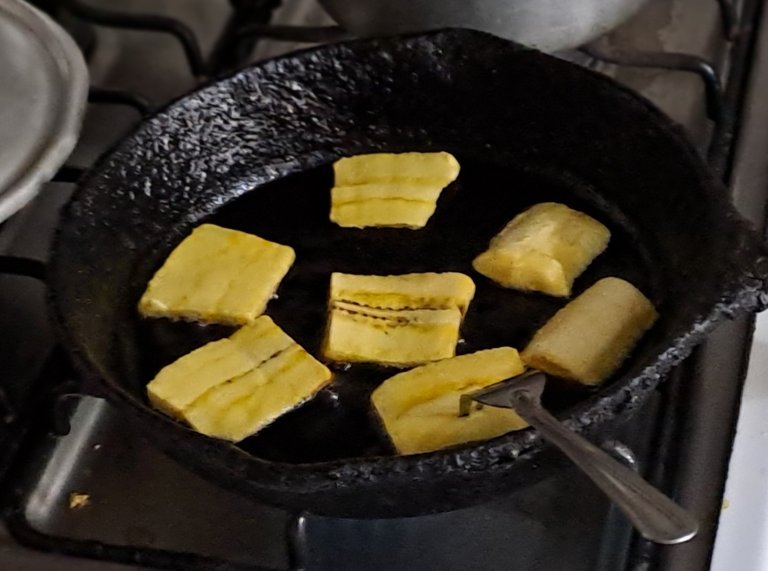
Cuando estén listas las tajadas apagamos la hornilla, buscamos un plato y procedemos a servir toda la comida. Servimos la pasta, le agregamos el guiso, el queso rallado y los plátanos. Et voilá! El plato está listo y servido.
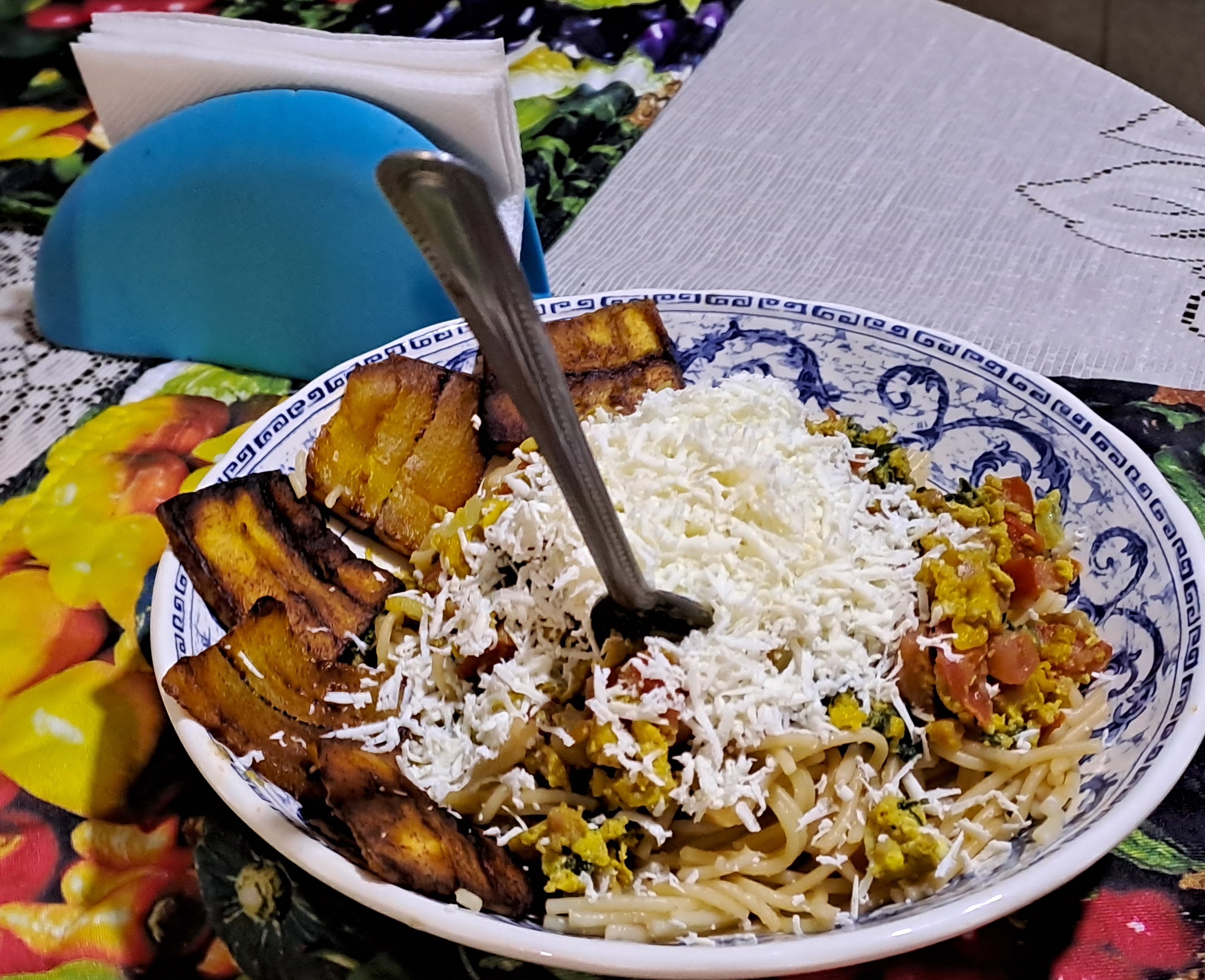
Como ven, esta receta no es nada del otro mundo, pero es muy sencilla y divertida de hacer, además de que se prepara muy rápidamente (para cuando tenemos prisa por comer rápido). Estoy seguro de que les va a gustar cuando la preparen y la prueben. Yo por mi parte les digo: "Buen Provecho".
Todas y cada una de las fotos de este post las tomé con mi propio celular Samsung y son de mi propiedad.
English
Vermicellies with grated cheese accompanied by scrambled egg stew with tomatoes and mortadella and banana slices
Hello friends of Hive. As my first post I featuring one of my everyday recipes, let's start with something simple. This is a dish I usually eat at least once a week because it's easy to make and nutritious. As I mentioned in my initial post, many of my recipes are simple and practical, so let's get started. The dish is: Vermicellies with grated cheese accompanied by scrambled egg stew with tomatoes and mortadella and banana slices.
Ingredients:
- Two eggs.
- Mortadella (One piece, half a piece, or whatever you prefer).
- Llanero cheese.
- Vermicelli.
- Salt.
- Cooking oil.
- Ripe plantain.
- Worcestershire sauce.
- Garlic sauce.
- Turmeric powder.
- Onion.
- Spinach.
- Tomato.
- Tomato sauce.
Preparation:

The first step is to bring the water to a boil to prepare the Vermicelli. I like to use a pot of a certain size, filling it a little more than halfway with water. The exact amount of pot and water needed to prepare the Vermicelli will depend on your taste and the number of people you're preparing this recipe for.
What you should remember is that when you heat the water, add a medium tablespoon of salt and two large tablespoons of cooking oil. While we wait for the water to boil, we'll cut the ingredients for the stew.

I like to cut the ingredients on a wooden or plastic board, but you can use a food slicer if you prefer. Now, we'll chop the onion into small pieces (I used half an onion). We'll also chop the tomato, mortadella, and spinach. The order in which you do this doesn't matter because (just like the commutative property in mathematics), the order of the factors doesn't change the product.
As you can see in the photo above, I've already chopped the tomato, onion, mortadella, and spinach.
Now, we'll heat a pan on the stove and add edible oil.
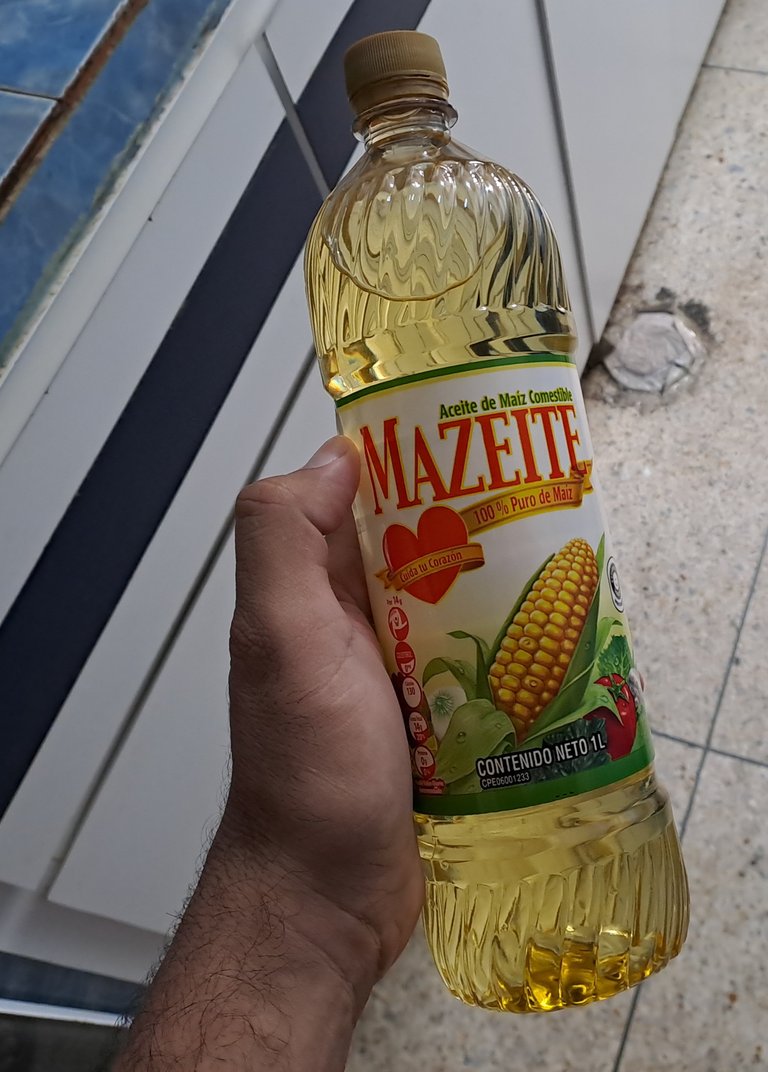
I like to use the one you see in the image above (which is Mazeite brand corn oil), but you can use any type of oil you like, as long as it's edible, of course.

As I said, we put edible oil in a pan and then let it simmer over low heat so the oil doesn't burn while we finish preparing everything else.
By now, the Vermicelli water has been boiling for a while, so all we need to do is add the Vermicelli to the pot and keep an eye on it. I have now here this brand of Vermicelli that's very popular in my country, and it's the one I like and the one I'm going to use in this meal, but you can use any other brand of your choice.

As you can see, the Vermicelli I used this time is a premium Vermicelli brand from Mary. Let the Vermicelli cook, and as it softens, fluff it with a fork.

The perfect way to cook Vermicelli (as an Italian friend taught me many years ago) is "al dente." This is simply the point at which the Vermicelli remains firm when eaten. "Al dente" means that the Vermicelli should be cooked but still slightly firm when eaten.
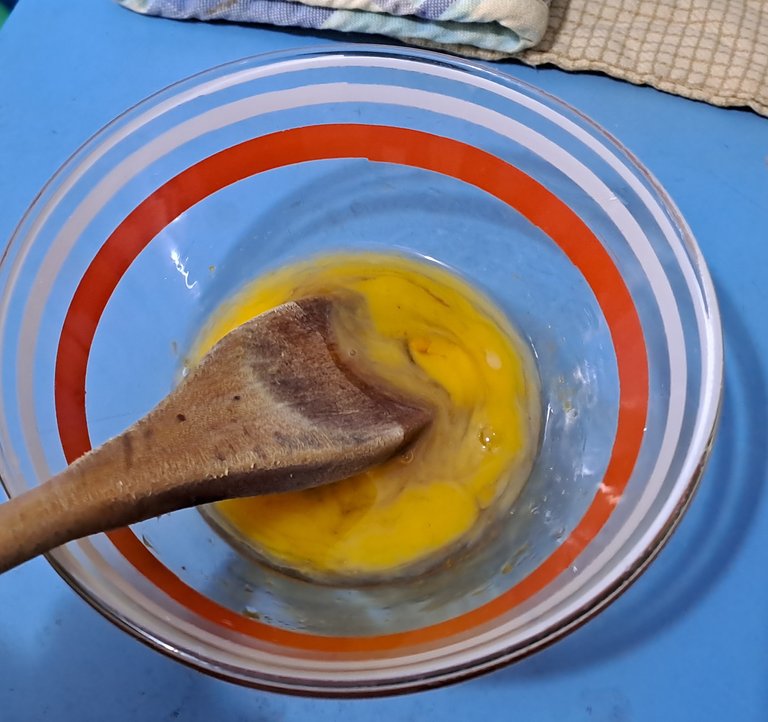
The same applies to the brands of products we use as ingredients, flavorings, and seasonings in our recipes. By the way, in this recipe I used La Giralda brand Worcestershire sauce and garlic sauce. And McCormick brand turmeric. But use any brand you prefer, as long as it's Worcestershire sauce, garlic sauce, and turmeric.

As I mentioned, we added Worcestershire sauce to the scrambled eggs.
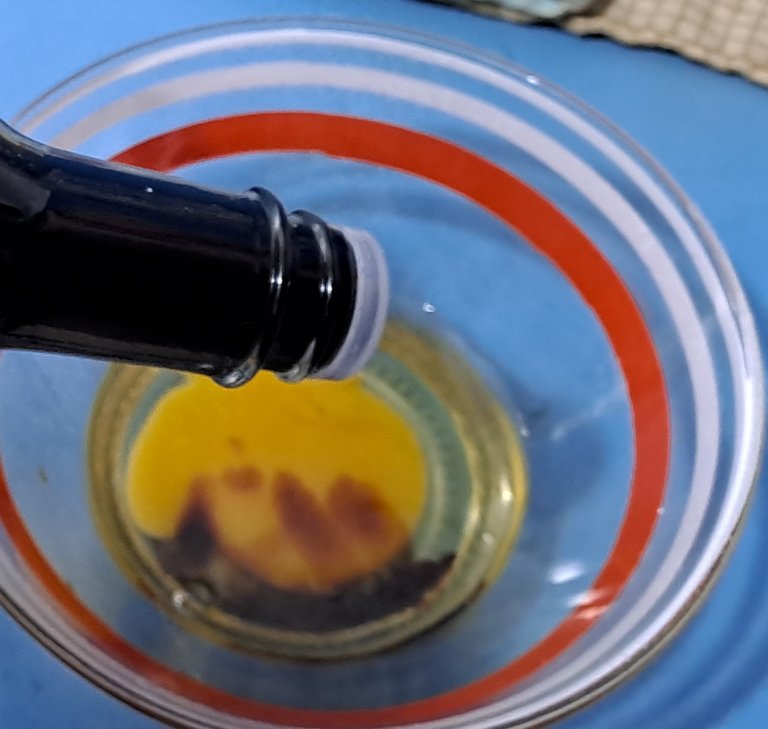
We also added garlic sauce...

And of course, we also added turmeric (an ingredient you can omit if you don't like the taste).

Scramble the egg with everything else you've added and then add the chopped mortadella.

Scramble again, and if you like, add a little more Worcestershire sauce and garlic sauce for extra flavor.
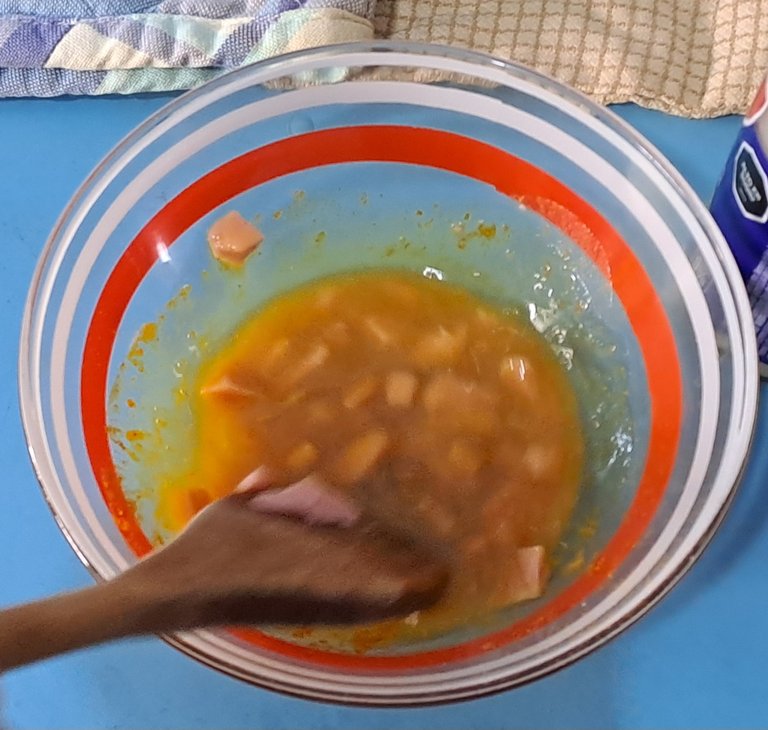
Set the bowl with the scrambled egg and mortadella aside and move on to what's next.

After sautéing the tomato, onion, and spinach for about half a minute over medium heat, add the scrambled egg and mortadella to the pan and begin stirring.

Stir lightly for about 30 seconds.

Then we cover the pan.

Now we'll review the Vermicelli, which is already cooked (al dente), in the other pot. Turn off the stove, take the pot out, and drain the pasta in the sink (or another pot). Once the pasta is dry in the pot we used to cook it, add tomato sauce (ketchup) to taste. Immediately stir the pasta and put a lid on. Meanwhile, take some white cheese (or llanero cheese), grate it, and place it in a container.
Now, return to the pan where we're frying the stew. Uncover it and you'll see that it's compacting and that the mixture seems to be growing. Stir again, but this time vigorously.

After a while, you'll know (by the consistency of the mixture) that it's ready, and cover it.


When the slices are ready, we turn off the stove, find a plate, and proceed to serve the entire meal. We serve the pasta, add the stew, grated cheese, and plantains. Et voilá! The dish is ready and served.

As you can see, this recipe isn't anything out of this world, but it's very simple and fun to make, and it's quick to prepare (perfect for when we're in a hurry to eat). I'm sure you'll love it when you make and try it. For my part, I say: "Bon Appetito."